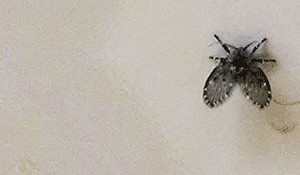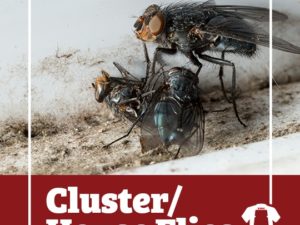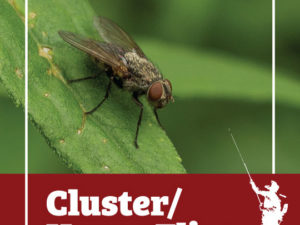
Flies, cockroaches and other insects that are attracted to various forms of decaying organic matter are among the worst types of insect pests to find within a home. Some commonly encountered insect pest species, like house flies, face flies and American cockroaches, regular travel into homes after making contact with excrement, carrion, rotting food, and garbage residue. As a result, these insect pests smear a plethora of disease-causing microorganisms on indoor surfaces and human foods. In some cases, these insect pests maintain infestations within homes by locating and congregating on sources of filth that are often hidden within well-concealed and/or inaccessible indoor areas. For example, multiple blow fly species are known for gravitating into wall voids where females lay eggs on one or more rotting rodent carcasses. Within a short period of time, larvae emerge and consume the surrounding flesh.
House flies and vinegar flies are known for laying eggs on decaying food scraps that have collected beneath and behind appliances and in garbage cans. Because of these filthy reproductive behaviors, homes should be sanitized regularly, garbage and recycle bin lids should be tightly secured, and entry points on the exterior walls of homes should be sealed to prevent rodent pests from invading wall voids where they may die and become a breeding site for adults, and a meal for larvae of blowflies and little house flies. However, fly pests belonging to the Psychodidae family are not always so easy to eliminate from homes, as these fly pests lay eggs in the sludge that accumulates on the interior surface of pipes, drains, septic tanks and swamp cooler filters, which cannot be readily accessed and cleaned.
Fly pests belonging to the Psychodidae family are commonly known by several names, such as drain flies, sewer flies, moth flies and filter flies. Adult drain flies resemble very small moths, and since they are poor flyers, they often congregate on walls and surfaces that are in close proximity to the drains with which they emerged. Cluster fly infestations are often first noticed by the extremely unpleasant odor of vomit, which is the odor adult drain flies emit when they cluster together. Drain fly larvae look like black worms that are around ⅜ of an inch in length, and they are usually not seen within infested houses, as they typically remain in septic tanks, sewage treatment beds, drains and wet pipes where their food sources are abundant. However, it is not uncommon for drain fly larvae to appear in toilet bowls, which may occur when septic tanks become full. Larvae will repeatedly appear in toilet bowls unless pipes are cleaned, septic tanks are dumped, or until all their food sources are removed.
Have you ever found larvae within your toilet, bath or sink water?













